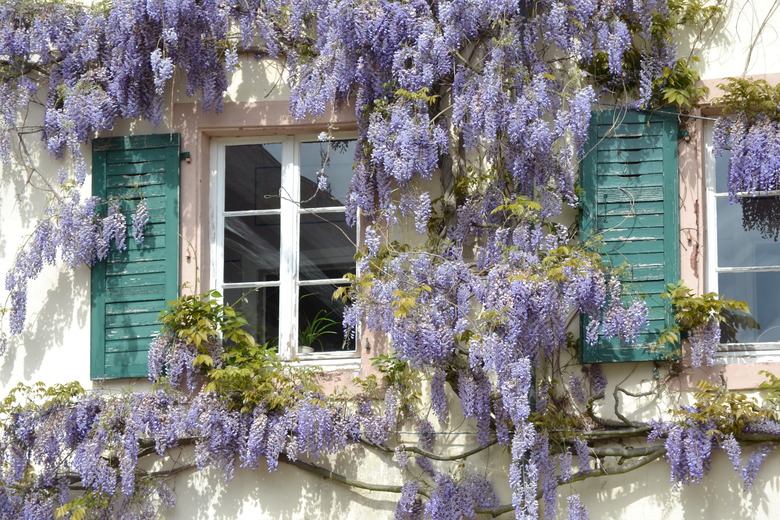How To Grow Wisteria From Seeds
Wisteria's (Wisteria spp.) graceful, drooping stems of fragrant flowers give way to long seed pods in late summer and fall. These blooming vines grow in U.S. Department of Agriculture plant hardiness zones 4 through 9, depending on the variety. Although the seeds produced are viable, it can take 15 or more years before the plant matures enough to flower, and wisteria seeds don't always produce true to the parent plant.
Seed Preparation
Seed Preparation
Seeds from wisteria are rarely available because of their long juvenile stage, so you usually have to collect your own. Collect pods after the wisteria leaves drop in fall but before the seed pods fully mature and burst open. Allowing the pods to dry thoroughly in a warm, dry place helps with viability. After the pods become brittle, twist them open to release the seeds inside. You can plant immediately or save the seeds until spring in a sealed jar or envelope.
Sow Successfully
Sow Successfully
Well-draining, sterile soil and a 3-inch diameter seedling pot with bottom drainage are all the supplies you need to get started. Disinfect used pots by soaking them in 1 part bleach and 9 parts water for 30 minutes, and then allow them to air dry so the bleach residue evaporates. Fill the pot with the soil mix and water it until the moisture drains from the bottom of the pot and into a drip tray. You can empty the drained water after 30 minutes. Soaking the seeds overnight in warm water can speed sprouting. Sow one or two wisteria seeds per pot, planting them 1 inch deep. Keep the pot in a 65-degree Fahrenheit spot and water it when the soil surface begins to dry. Covering the pot with a plastic bag helps retain moisture during germination, but remove the bag after the seeds sprout. It can take wisteria seeds 30 to 60 days to germinate.
Basic Care
Basic Care
Full, all-day sun helps wisteria seedlings grow strong and develop straight stems. Place the pot in a south-facing window or other sunny spot, but keep the temperatures above 55 F. Wisteria needs to be watered when the top 1/2 inch of soil feels dry. After watering, empty any collected water from the drip tray. You can transplant your wisteria outside in spring or summer, as long as the plants have grown in at least two sets of leaves and there are at least 45 days until the first expected frost. Plant in a well-drained area that receives at least six hours of daily sun. A spot near a fence or trellis will provide some support as the wisteria grows.
A Quicker Option
A Quicker Option
If waiting 15 years or more for flowers seems too long, try starting new wisteria from cuttings instead of seeds. As an added benefit, the cuttings will have all the same traits as the parent plant. Wipe down your shears with a cloth soaked in rubbing alcohol to disinfect them, and cut off a 6-inch basal shoot in early summer. These shoots emerge from near the stem base of an established wisteria. Plant the shoot in a moist mixture of equal parts peat and sand, using a 5-inch diameter pot with bottom drainage. Keep the mix moist and cover it with a plastic bag to retain moisture. The cutting usually roots within four to six weeks when set in a warm spot with indirect but bright sun. You can continue growing it indoors over winter or transplant it outdoors as you would a seedling.
